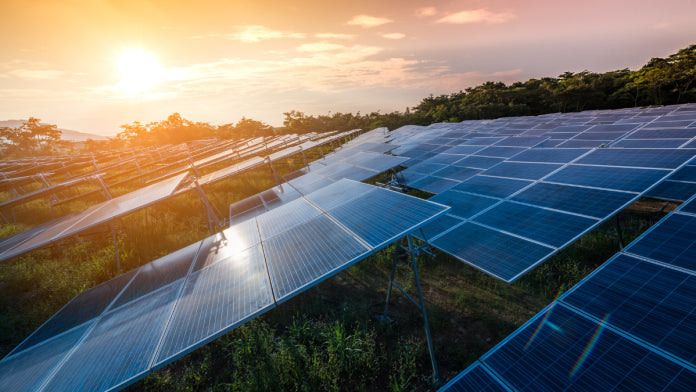https://solarquarter.com/2023/06/30/irena-report-highlights-100-innovative-solutions-for-smart-electrification-and-decarbonization/
IRENA Report Highlights 100 Innovative Solutions For Smart Electrification And Decarbonization
Electrifying the use of energy in industry, transport and buildings with renewables is a cost-effective way to decarbonise end-use sectors, increase security of supply, reduce dependency on imported fossil fuels and mitigate risks of fuel price volatility as experienced in recent years.
A new report by the International Renewable Energy Agency (IRENA) provides governments with a toolbox of 100 innovative solutions to tailor national strategies and cut emissions in end-uses. By formulating smart electrification strategies, countries can take concrete actions, minimise investment and significantly accelerate the transition towards the COP28 in Dubai later this year.
Innovation Landscape for smart electrification was launched by IRENA’s Director-General Francesco La Camera in the presence of European Commissioner for Energy, Kadri Simson at an official launch event hosted by the European Commission in Brussels today.
IRENA’s Director-General Francesco La Camera said, “Smart electrification gives governments a cost-effective way to accelerate economic growth, improve energy security and reduce the growing impacts of climate change. Today, many solutions are available and ready for commercialisation, with pioneering companies creating, trialling, and deploying transformative innovations. May our toolbox provide governments with concrete solutions they can pursue in support of national energy sector priorities and decarbonisation plans in the run-up to COP28 and beyond.”
Kadri Simson, the European Commissioner for Energy added, “Last year’s energy crisis has shown how important it is to decrease our dependence on imported fossil fuels, and that is why we increased our renewables ambitions to 42.5% by 2030. To facilitate smart electrification, we put forward the Electricity Market Design that enables an even faster acceleration of renewables, supports innovative flexibility solutions, and provides consumers and industries with additional means to actively engage in the electricity market and directly gain access to renewable power. IRENA’s report confirms that our policy choices are both right and necessary.”
Electricity will be the main energy carrier of the future, accounting for more than half of global energy consumption by 2050, as to IRENA’s Outlook. The dramatic cost reduction of renewable electricity generation has pushed progress in the power sector with installed renewables reaching 40% globally in 2022. In the EU, almost 60% of power generation capacity is from renewable sources. Around 40% of total electricity generation came from renewables, out of which wind and solar generated close to 22% of electricity, overtaking gas for the first time. Now the focus must move towards electrifying end-uses that still largely rely on fossil fuels.
Many of the electric-powered technologies are available today, including electric vehicles (EVs) and heat pumps for buildings and industrial processes. In addition, indirect electrification, using green hydrogen produced by renewable power, can be a solution to decarbonise hard-to-abate sectors.
Yet, electrifying the demand goes beyond the adoption of technology solutions and requires the involvement of all stakeholders across the energy value chain from both the power sector and end-uses (Power-to-X). Decision-makers need to take a systemic approach, combining innovations in technology and infrastructure with those in market design and regulation, system planning and operation, and business models, the new report finds.
Innovation can reduce costs, minimise investment, and create new business opportunities. Massive stimulus packages are put in place in major economies like the Inflation Reduction Act in the USA and the Net Zero Industry Act in the European Union. To a great extent, these initiatives and associated investments are the results of technology innovation as well as innovation in policies, market design and financing instruments.
The report concludes that in the absence of a “one-size-fits-all” solution for smart electrification, optimal strategies and implementation of innovations will vary among countries and system-specific attributes. It provides guidance on how to use the innovation toolbox based on the country’s context.
The toolbox draws from a review of hundreds of innovative solutions that are emerging worldwide and input from many experts, from start-ups, large companies, regulators and system operators.







